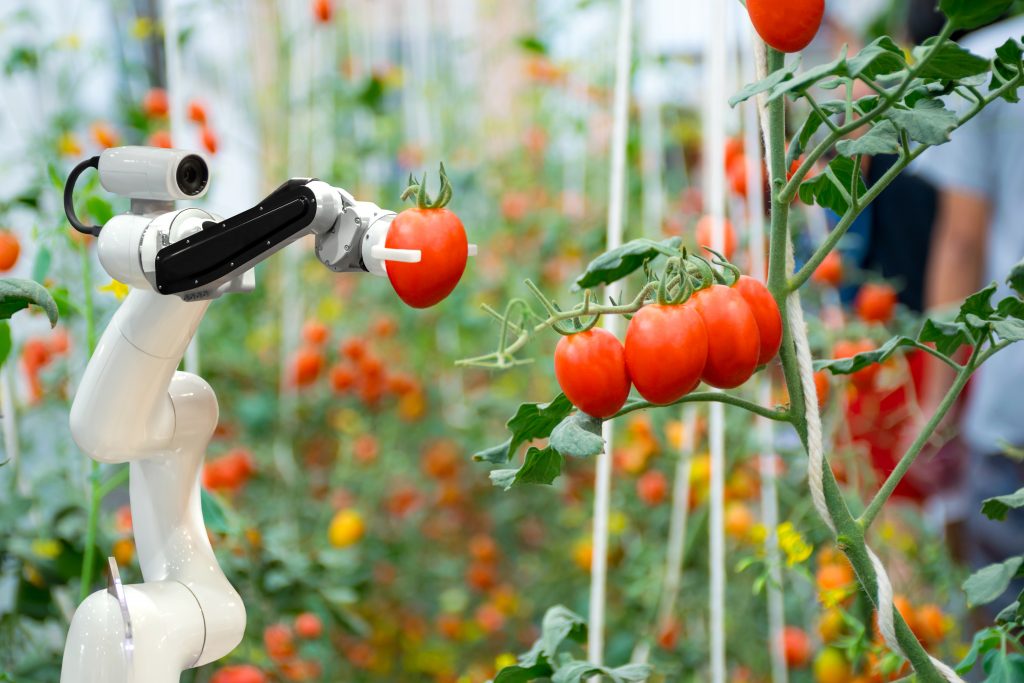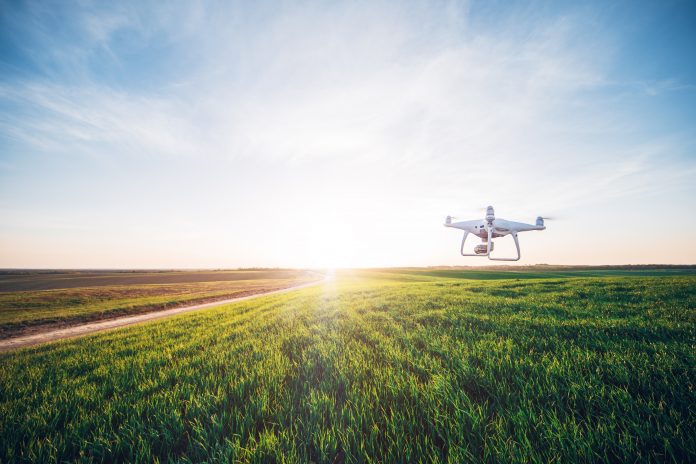With Australia’s population projected to reach 38.8 million in 2060-61, agricultural productivity will need to increase to help sustain our growing population.
By Australian Mobile Telecommunications Association CEO Louise Hyland.

Over the next decade, 5G will play a critical role in smart farming and precision agriculture which promises to be the key to optimising resources and enhancing production.
As the next generation of mobile technology, 5G has been designed to meet the continuing growth in demand for data and connectivity from industries, like agriculture, offering mobility, stability and speed.
New smart farming technologies, like drones, autonomous agriculture vehicles, robotics, artificial intelligence (AI) and IoT devices, that leverage fast, high-capacity private and public 5G networks, will ultimately maximise operations. This will not only improve the quality and quantity of crops, and the health and welfare of livestock, it will also improve the sustainability and profitability of the agriculture industry.
To showcase the opportunities for Australian agriculture, the Australian Mobile Telecommunications Association (AMTA) has identified five ways that 5G will change agriculture.
1. Drones
Many industries in Australia are realising the potential of drones or unmanned aerial vehicles (UAVs), but they will have one of the greatest impacts on the agriculture industry.
With over 55% of Australian land used for agriculture, drones operating on the 5G network could dramatically improve productivity, helping to carry out time and labour-intensive tasks on large farms and properties.
Whilst drones are already being used in agriculture, mobile operators, like Optus, are exploring how 5G could play a crucial role in enabling drones to fly beyond the visual line of sight and be fully autonomous, setting out at various times of the day to complete tasks, which would be a gamechanger for farms.
Using 5G’s high-speed and ultra-reliable connectivity, drones could automatically transmit HD videos and images, including thermal and topographical images, track and identify objects like livestock, weeds and pests using AI, and act on commands seamlessly controlled from kilometres away. This will enable agribusinesses to better analyse field conditions, distribute seeds and sprays, and manage crops and livestock in real-time.
2. Autonomous farm equipment
Autonomous farm equipment is the next big thing in smart farming. Connected through 5G, they will streamline operations on farms and assist with labour shortages in Australia, which became a problem for some farmers during the pandemic.
Using 5G’s reliable and fast connectivity, farmers will be able to remotely operate a variety of driverless machinery, like tractors and harvesters, and even ‘field robots’ that could manage tasks like weeding. 5G will also enable autonomous agricultural equipment to communicate directly with each other in real-time, allowing farmers to control crop management processes end-to-end and increase efficiency.
John Deere is one manufacturer that is looking to use 5G to make autonomous farm equipment smarter, revealing a concept autonomous electric tractor and ‘See & Spray’, an AI-powered weed sprayer, last year. Both machines use the cloud to operate, so they need an ultra-low latency 5G connection to be effective and become more of a reality on farms.
Another smart tractor, Monarch Tractor, which is an electric, self-driving tractor with 360-degree cameras and sensors that can collect data from the field, can be controlled from a farmer’s phone, and through 5G, farmers could remotely control fleets of these tractors to manage entire farms.
3. Livestock monitoring
Real-time animal monitoring with precision livestock farming (PLF) technology will become more prevalent with 5G. 5G-enabled technology, such as animal tags, sensors and cameras, will transmit accurate and reliable data about an animal’s health and location faster for better livestock management.
Through 5G’s reliable connectivity, farmers can monitor animal eating and sleeping patterns, feed availability, indoor and outdoor environments, and general behaviour to identify if an animal is sick or even pregnant, helping farmers to make better choices for their livestock and improve animal welfare.
There are already 5G animal monitoring projects being trialled on farms. 5G RuralFirst in the UK is using 5G-connected collars and biometric ear tags on cows for better tracking and health monitoring over vast, remote areas, which will allow farmers to proactively target sick cows and remove them from the herd to reduce the spread of infections. In Australia, TPG Telecom secured a 5G Innovation Initiative grant to trial using its 5G network, alongside artificial intelligence-enabled image processing, computer vision and edge computing technologies, to enable multiple high quality 4K video streams to count sheep at a regional livestock exchange, automating the process and removing human error.
4. Food management
Improving food management will be essential for increasing food supply. Using the high-speed and high capacity 5G networks, food producers will be able to connect multiple IoT devices and sensors to track and monitor food along the supply chain, from processing to storage and delivery.
This will improve traceability and storage conditions which will increase food safety, minimising the risk of contamination and food poisoning and reduce food waste, with 7.6 million tonnes of food waste recorded across the supply and consumption chain each year in Australia.
Whilst sensors and video streams in food management are not new, 5G will provide instant and more reliable data and vision analysis.
As part of the Australian 5G Innovation Initiative, the Australian Meat Processer Corporation is using 5G-enabled video technology to improve the quality assurance process of meat production, with the goal to reduce the cost of compliance and at the same time increase the effectiveness of compliance auditing for farmers in regional and rural Australia.
Other trials in food storage, like Simplot Australia’s trial of sensors in seed potato storage bins to measure CO2 levels to determine the optimal storage conditions and reduce seed loss, will benefit greatly from 5G, with the ability to monitor storage conditions in real-time, reducing waste and increasing farm incomes.
5. Weather stations
Farmers and their crops are often at the mercy of the weather, so having field condition data is becoming more important for precision farming. Using 5G-powered weather stations can help farmers optimise their labour, water usage and crop health, preventing damage and disease.
Weather conditions like rainfall, temperature, wind speed and direction, air pressure and humidity can all be measured in real-time through 5G across multiple and large properties, providing more data-dense observations to help farmers achieve better crop yields.
Weather stations that use 5G are already starting to hit the market, like Origo which was developed in Perth, Western Australia, and uses a mesh network and IoT 5G services to provide 24/7 coverage across farms. Beyond this, there is an immense opportunity with regional connected weather stations.
Mobile network operator Telstra is currently deploying 55 robust, high quality IoT-enabled weather stations around Toowoomba, Queensland, using existing mobile network sites to provide a hyper-local weather data and forecast system for farmers in the region to support improved management decisions on crop production, labour and the supply chain. The project will test the viability of a weather network service to provide highly localised weather for farmers and could become more widely used across Australia with the continued roll out of IoT 5G networks, which are complementary to public 5G networks. There is great potential for smart farming and precision agriculture on the horizon with mobile network operators continuing to invest in the roll out of 5G across Australia, including in regional and rural areas. Australia is a large country, so it will take time for new 5G network infrastructure to become robust, but the future opportunities for agriculture offered by 5G are extremely exciting and promising.
About Louise Hyland
Ms Hyland was appointed as Chief Executive Officer of the Australian Mobile Telecommunications Association Limited (AMTA) in May 2021.
Prior to joining AMTA, Ms Hyland was Principal at Hirst Advisory where she consulted to businesses and government agencies in the telecommunications, telehealth and infrastructure sectors. Previously, Ms Hyland was the General Manager, Commercial Implementation at NBN Co for over six years and prior to that, the Commercial Director and General Counsel of PCCW’s business in Europe.
Ms Hyland holds Bachelor of Arts and Batchelor of Laws degrees from Monash University (Vic) and a Master of Business Administration from Cranfield University (UK).
About Australian Mobile Telecommunications Association
ABTA is the peak industry organisation and voice representing Australia’s mobile telecommunications sector and operates programs covering all aspects of the mobile ecosystem such as telecommunications policy, mobile network infrastructure, radiofrequency spectrum, health & safety, product stewardship / e-waste and recycling, national security, content regulation and consumer awareness and education.



